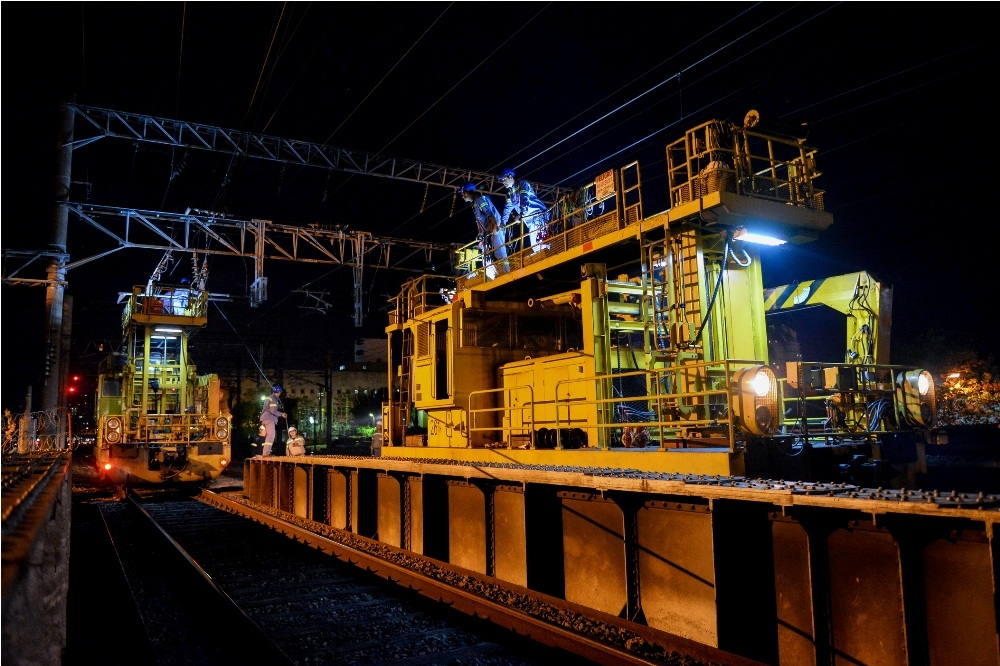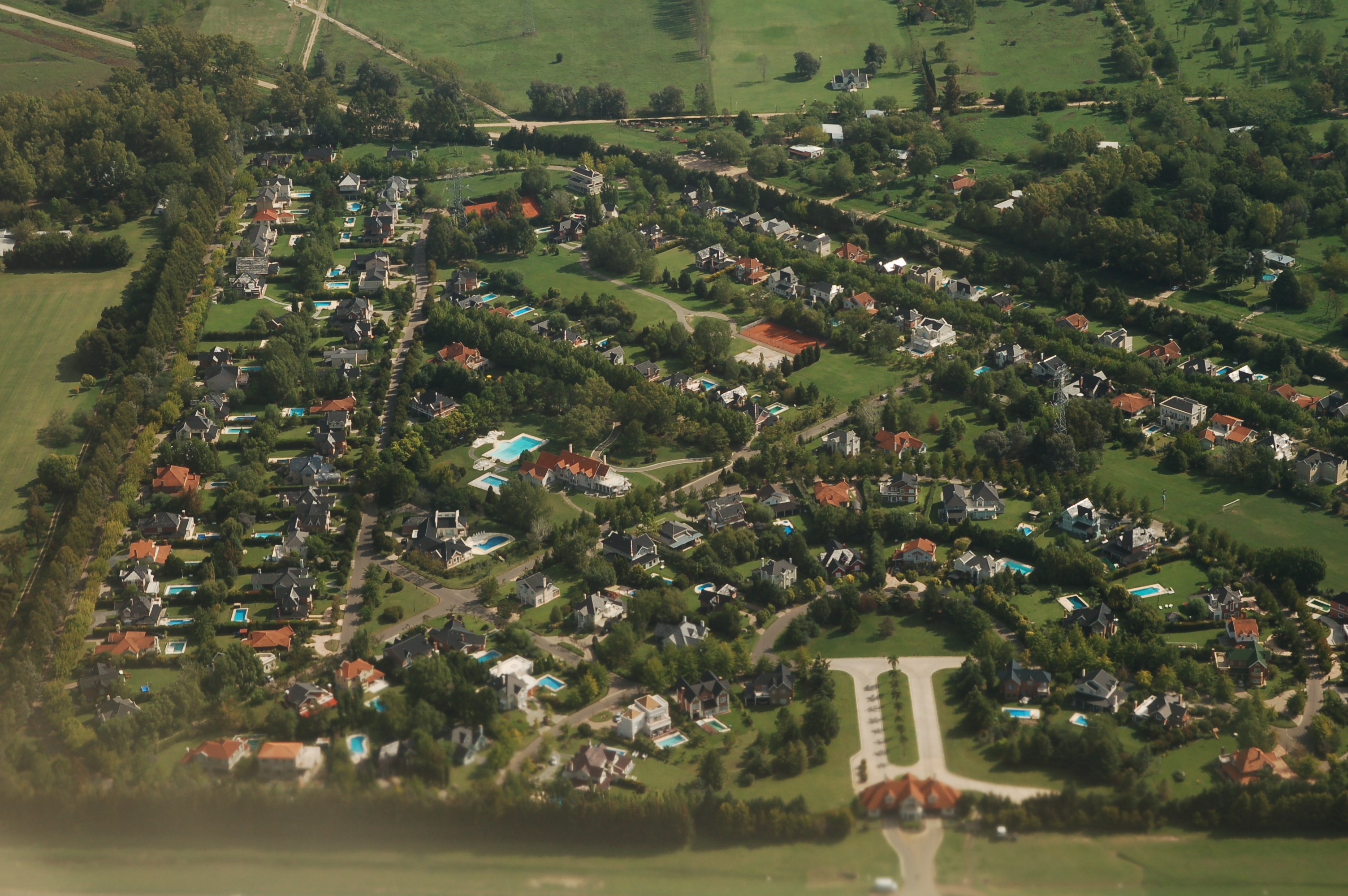|
El Jagüel
El Jagüel is a city in Esteban Echeverría Partido, Buenos Aires Province, Argentina. It was founded on 23 September 1951. Geography Location El Jagüel is located on both sides of Provincial Route 205. It borders the Ezeiza Partido, and the towns of Monte Grande and Canning. It is crossed by the Arroyo Ortega. The area is made up mostly of workers and small and medium-sized entrepreneurs. The commercial developments are located in the central streets, next to Route 205 and on the main street of the city (called "Evita"), which extends from the eponymous railway station to Avenida Pedro Dreyer, which in turn joins the Provincial Routes 4, 52 and 58. Barrios History El Jagüel was formed from the division and urbanization of land carried out by a real estate company in the 1950s. At that time, the place was an open field, with little presence of houses. In 1954, several inhabitants settled who acquired plots in the area, and built their homes with minimal comfort. Ther ... [...More Info...] [...Related Items...] OR: [Wikipedia] [Google] [Baidu] |
List Of Cities In Argentina
This is a list of city, cities in Argentina. List of Argentine cities Over 150,000 inhabitants 45,000 to 150,000 inhabitants This is a list of the localities of Argentina of 45,000 to 150,000 inhabitants ordered by amount of population according to the data of the 2001 INDEC Census. * San Nicolás de los Arroyos (Buenos Aires) 133,602 * San Rafael, Mendoza, San Rafael (Mendoza) 104,782 * Rafael Castillo, Buenos Aires, Rafael Castillo (Buenos Aires) 103,992 * Trelew (Chubut) 103,305 * Santa Rosa, La Pampa, Santa Rosa (La Pampa) 101,987 * Tandil (Buenos Aires) 101,010 * Villa Mercedes, San Luis, Villa Mercedes (San Luis) 97,000 * Puerto Madryn (Chubut) 93,995 * Morón (Buenos Aires) 92,725 * Virrey del Pino (Buenos Aires) 90,382 * Caseros, Buenos Aires, Caseros (Buenos Aires) 90,313 * San Carlos de Bariloche (Río Negro) 90,000 * Maipú, Mendoza, Maipú (Mendoza) 89,433 * Zárate, Buenos Aires Province, Zárate (Buenos Aires) 86,686 * Burzaco (Buenos Aires) 86,113 ... [...More Info...] [...Related Items...] OR: [Wikipedia] [Google] [Baidu] |
Monte Grande
Monte Grande is a city which forms part of the urban agglomeration of Greater Buenos Aires. It is the administrative seat of Esteban Echeverría Partido in Buenos Aires Province, Argentina. It was founded in 1824 as an agricultural colony. The government of Martín Rodríguez worked with William Parish Robertson to settle 500 Scottish immigrants in the town in the 1820s. It has an area of and a population of 109,644 inhabitants (). Named for the '' Pago de Monte Grande'' founded by a Spanish Empire Conquistador, the town initially grew around tala and ombú forests, to which vineyards and peach trees were later added. The Sociedad Coni, Sansinena y Cía., prominent Avellaneda-area saladero operators, purchased the land from the Fair family in 1889; Governor Máximo Paz signed a bill establishing Monte Grande on April 3 of that year. Among Monte Grande's first significant businesses were kiln opened by Coni & Sansinena, and the Bon Marché market. Esteban Echeverría Part ... [...More Info...] [...Related Items...] OR: [Wikipedia] [Google] [Baidu] |
Cities In Argentina
This is a list of cities in Argentina. List of Argentine cities Over 150,000 inhabitants 45,000 to 150,000 inhabitants This is a list of the localities of Argentina of 45,000 to 150,000 inhabitants ordered by amount of population according to the data of the 2001 INDEC Census. * San Nicolás de los Arroyos (Buenos Aires) 133,602 * San Rafael (Mendoza) 104,782 * Rafael Castillo (Buenos Aires) 103,992 * Trelew (Chubut) 103,305 * Santa Rosa (La Pampa) 101,987 * Tandil (Buenos Aires) 101,010 * Villa Mercedes (San Luis) 97,000 * Puerto Madryn (Chubut) 93,995 * Morón (Buenos Aires) 92,725 * Virrey del Pino (Buenos Aires) 90,382 * Caseros (Buenos Aires) 90,313 * San Carlos de Bariloche (Río Negro) 90,000 * Maipú (Mendoza) 89,433 * Zárate (Buenos Aires) 86,686 * Burzaco (Buenos Aires) 86,113 * Pergamino (Buenos Aires) 85,487 * Grand Bourg (Buenos Aires) 85,159 * Monte Chingolo (Buenos Aires) 85,060 * Olavarría (Buenos Aires) 83,738 * Rawson (San Juan) 83 ... [...More Info...] [...Related Items...] OR: [Wikipedia] [Google] [Baidu] |
Populated Places In Buenos Aires Province
Population is a set of humans or other organisms in a given region or area. Governments conduct a census to quantify the resident population size within a given jurisdiction. The term is also applied to non-human animals, microorganisms, and plants, and has specific uses within such fields as ecology and genetics. Etymology The word ''population'' is derived from the Late Latin ''populatio'' (a people, a multitude), which itself is derived from the Latin word ''populus'' (a people). Use of the term Social sciences In sociology and population geography, population refers to a group of human beings with some predefined feature in common, such as location, race, ethnicity, nationality, or religion. Ecology In ecology, a population is a group of organisms of the same species which inhabit the same geographical area and are capable of interbreeding. The area of a sexual population is the area where interbreeding is possible between any opposite-sex pair within the a ... [...More Info...] [...Related Items...] OR: [Wikipedia] [Google] [Baidu] |
Roca Line
The Roca line is a gauge commuter rail service in the Buenos Aires Province, Argentina, part of General Roca Railway network. The service is currently operated by State-owned company Trenes Argentinos, from the city-centre terminus of Constitución south to Ezeiza, Alejandro Korn, La Plata, Cañuelas, Chascomús, Gutiérrez and Lobos, and west to Sarmiento Line's station Haedo. The transfer stations between the branch lines are Avellaneda, Temperley, Bosques and Berazategui. The line consists of 198 kilometres of track (55 of which are electrified), 70 stations, 146 grade crossings, 907 daily services through its different branches, and carries half a million passengers daily, making it the longest and most extensively used line of the Buenos Aires commuter rail network. Large electrification and infrastructure improvement works were undertaken on the line in the early 2010s, with brand new electric multiple units entering service on 8 June 2015. History This li ... [...More Info...] [...Related Items...] OR: [Wikipedia] [Google] [Baidu] |
Provincial Route 58 (Buenos Aires)
Provincial may refer to: Government & Administration * Provincial capitals, an administrative sub-national capital of a country * Provincial city (other) * Provincial minister (other) * Provincial Secretary, a position in Canadian government * Member of Provincial Parliament (other), a title for legislators in Ontario, Canada as well as Eastern Cape Province, South Africa. * Provincial council (other), various meanings * Sub-provincial city in the People's Republic of China Companies * The Provincial sector of British Rail, which was later renamed Regional Railways * Provincial Airlines, a Canadian airline * Provincial Insurance Company, a former insurance company in the United Kingdom Other Uses * Provincial Osorno, a football club from Chile * Provincial examinations, a school-leaving exam in British Columbia, Canada * A provincial superior of a religious order * Provincial park, the equivalent of national parks in the Canadian provinces * ... [...More Info...] [...Related Items...] OR: [Wikipedia] [Google] [Baidu] |
El Jagüel Railway Station
EL, El or el may refer to: Arts and entertainment Fictional entities * El, a character from the manga series ''Shugo Chara!'' by Peach-Pit * Eleven (''Stranger Things'') (El), a fictional character in the TV series ''Stranger Things'' * El, family name of Kal-El (Superman) and his father Jor-El in the Superman dynasty * E.L. Faldt, character in the road comedy film ''Road Trip'' Music * Él Records, an independent record label from the UK founded by Mike Alway * ''Él ''(Lucerito album), a 1982 album by Lucerito * "Él", Spanish song by Rubén Blades from the album '' Caminando'' * "Él" (Lucía song), the Spanish entry performed by Lucía in the Eurovision Song Contest 1982 Other media * ''Él'', 1926 autobiographical novel by Mercedes Pinto * ''Él'' (film), a 1953 film by Luis Buñuel based on the 1926 novel * ''Él'' (visual novel), a 1991 Japanese adult visual novel * EL TV, an Azerbaijani regional television channel Companies and organizations * Estée Lauder Compan ... [...More Info...] [...Related Items...] OR: [Wikipedia] [Google] [Baidu] |
Canning, Buenos Aires
Canning is a town in Buenos Aires province, Argentina, divided between the ''partidos'' of Esteban Echeverría José Esteban Antonio Echeverría (2 September 1805 – 19 January 1851) was an Argentine poet, fiction writer, cultural promoter, and liberal activist who played a significant role in the development of Argentine literature, not only thro ... and Ezeiza, located between the two on Route 52. It is located southwest of the Buenos Aires metropolitan area and is fighting for independence from Ezeiza and E.Echeverría. Canning has had exponential growth due to residential developments and country clubs. Population According to the latest census, it had 8,960 inhabitants (INDEC, 2001) of which 6,442 were in Esteban Echeverría and 2,518 in Ezeiza. Much of the population lives in gated communities. Neighborhoods *Providence Resort & Country Club (Ezeiza) *Don Marcelo (Esteban Echeverría) *Flowers (Esteban Echeverría) *Tranquility (Esteban Echeverría) *Deer I (Est ... [...More Info...] [...Related Items...] OR: [Wikipedia] [Google] [Baidu] |
Ezeiza Partido
Ezeiza Partido is a partido ( second-level administrative subdivision) located in the southern part of Gran Buenos Aires in Buenos Aires Province, Argentina. The provincial subdivision has a population of 160,219 inhabitants in an area of , and its capital city is Ezeiza, which is located around from Buenos Aires. Ezeiza and its surroundings is an affluent area where many well-to-do people live. There are many gated communities in Ezeiza. Sports This provincial subdivision is home to Club Social y Deportivo Tristán Suárez, a football club that play in the regionalised 3rd tier of Argentine football, Primera B Metropolitana. Districts * Ezeiza * Tristán Suárez * La Unión * Carlos Spegazzini * Ezeiza International Airport *Canning Canning is a method of food preservation in which food is processed and sealed in an airtight container (jars like Mason jars, and steel and tin cans). Canning provides a shelf life that typically ranges from one to five years, althoug ... [...More Info...] [...Related Items...] OR: [Wikipedia] [Google] [Baidu] |
Greater Buenos Aires
Greater Buenos Aires (, GBA), also known as the Buenos Aires Metropolitan Area (, AMBA), refers to the urban agglomeration comprising the Autonomous City of Buenos Aires Buenos Aires, controlled by the government of the Autonomous City of Buenos Aires, is the Capital city, capital and largest city of Argentina. It is located on the southwest of the Río de la Plata. Buenos Aires is classified as an Alpha− glob ... and the adjacent 24 ''partidos of Buenos Aires, partidos'' (districts) in the Buenos Aires Province, Province of Buenos Aires. Thus, it does not constitute a single administrative unit. The conurbation spreads south, west and north of Buenos Aires city. To the east, the Río de la Plata, River Plate serves as a natural boundary. Urban sprawl, especially between 1945 and 1980, created a vast metropolitan area of over 3,800 km² (1,500 mi²) – or 19 times the area of Buenos Aires proper. The 24 suburban ''partidos'' (counties) grew more than sixfold in ... [...More Info...] [...Related Items...] OR: [Wikipedia] [Google] [Baidu] |





